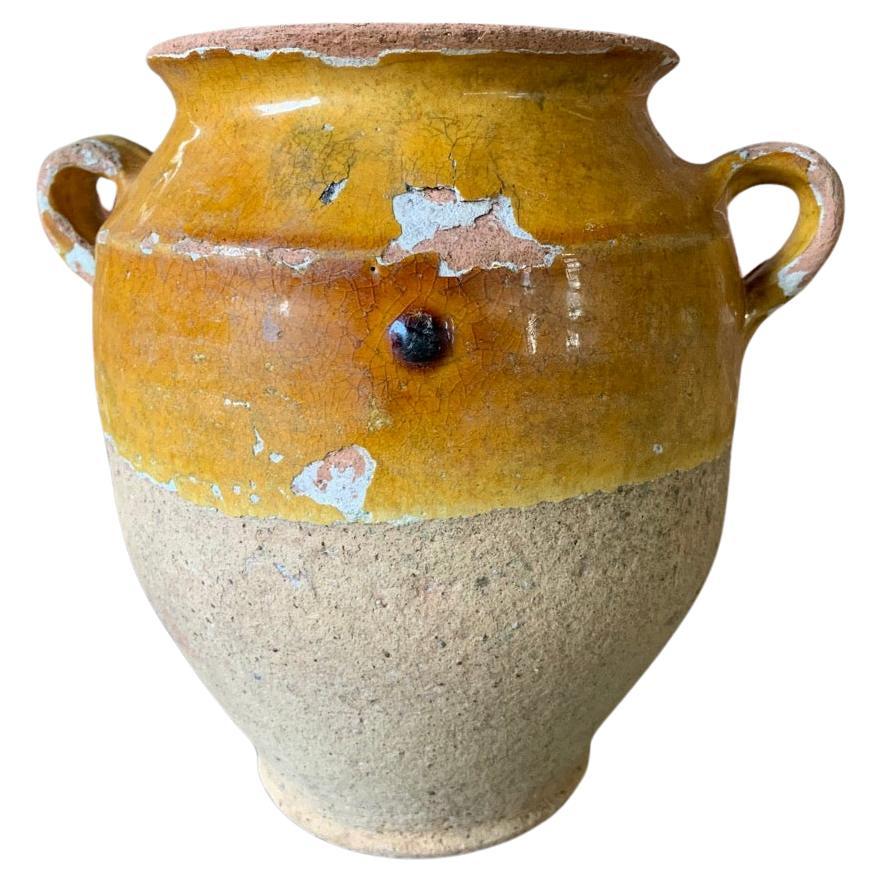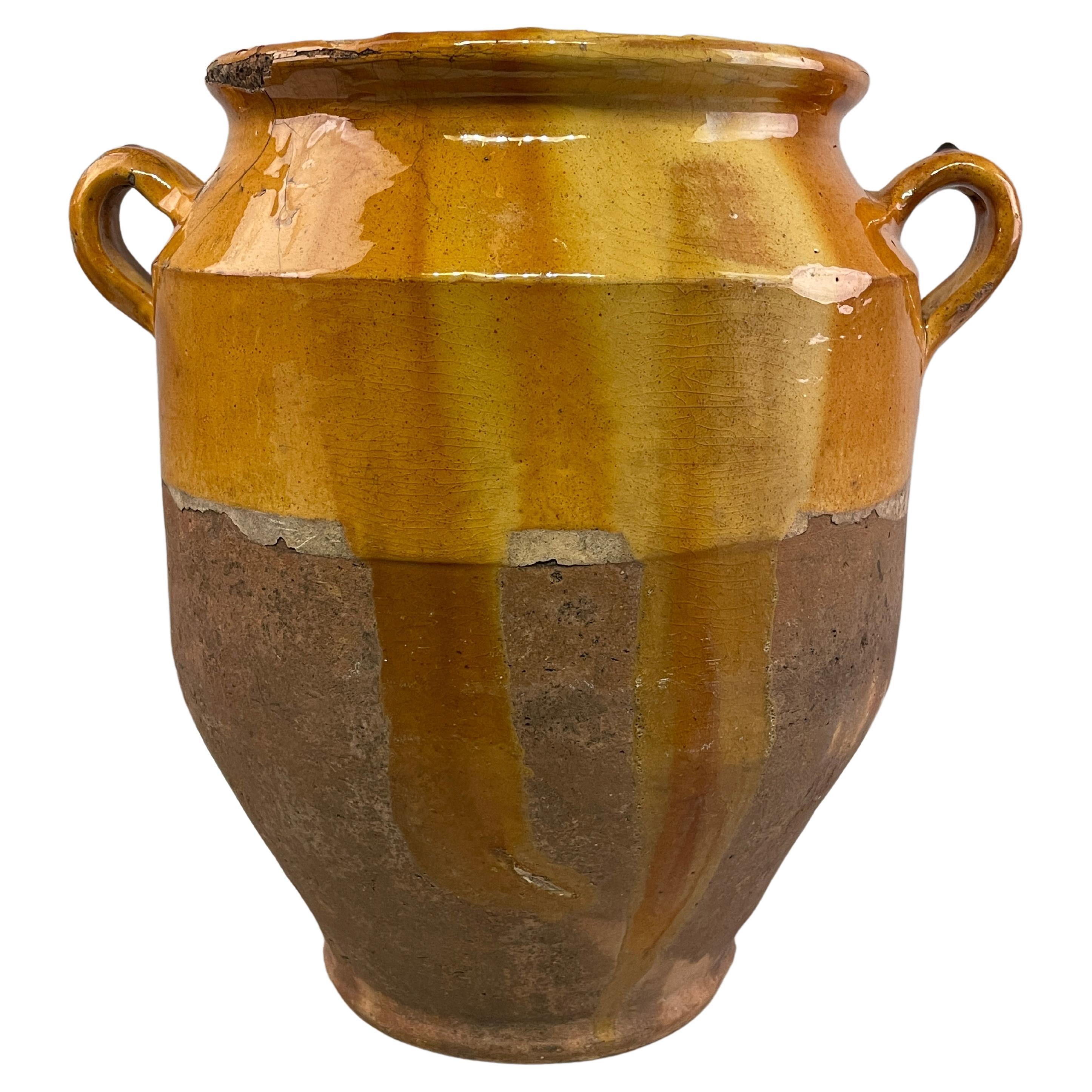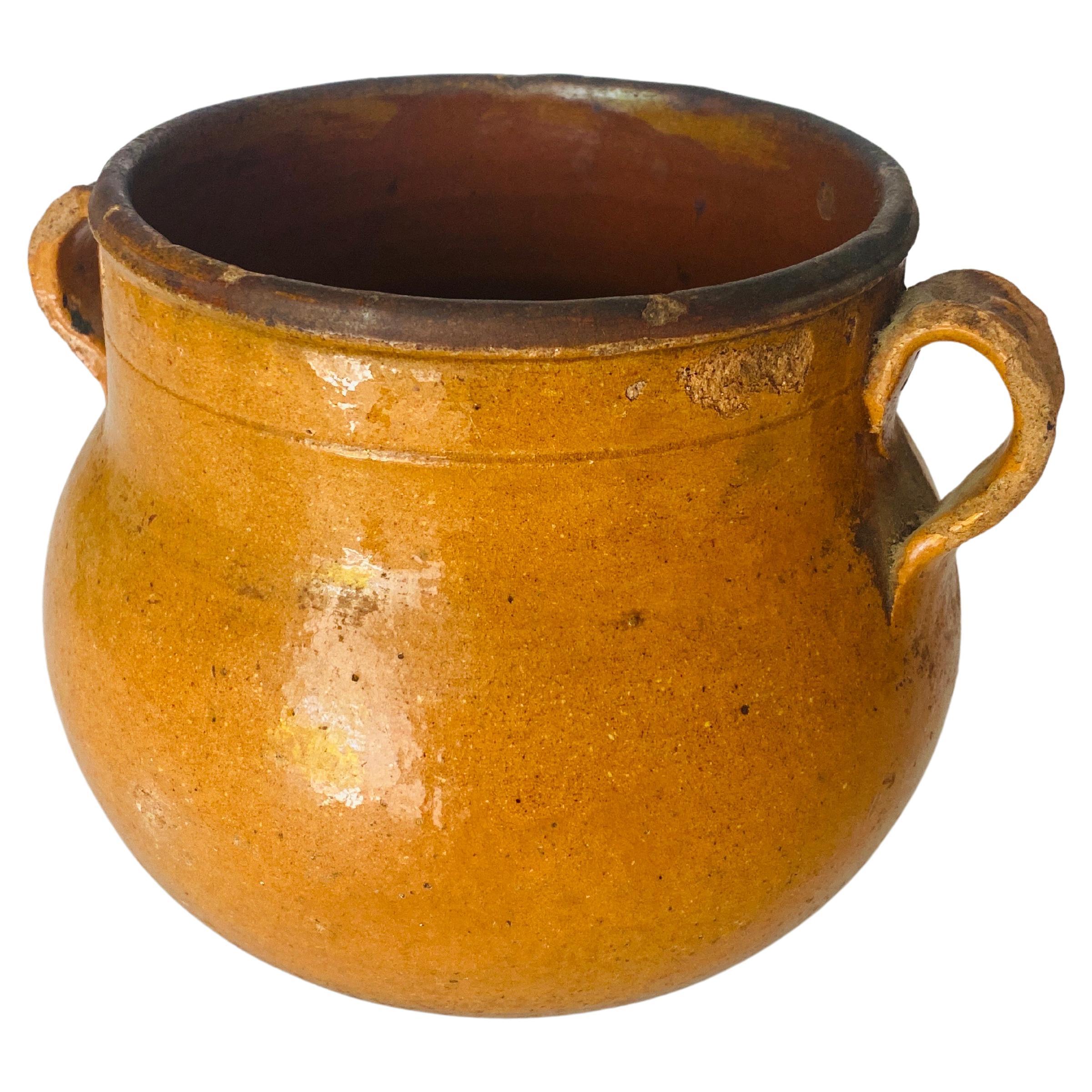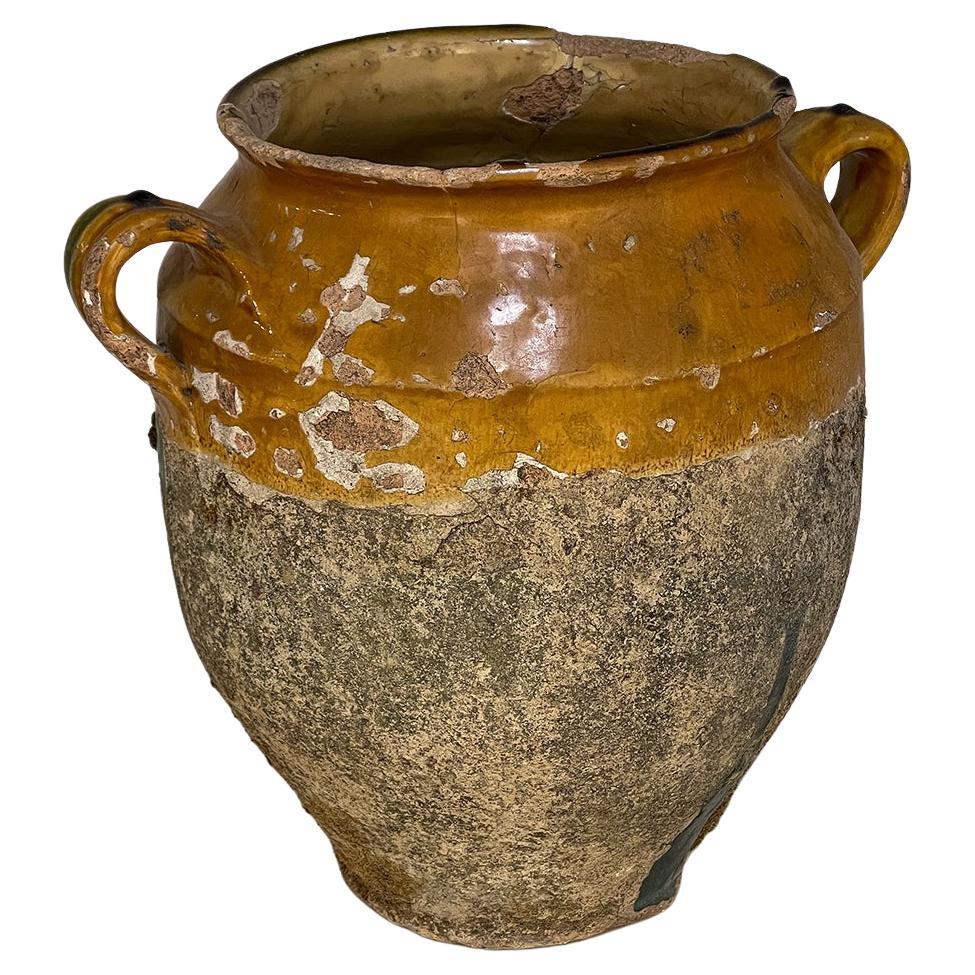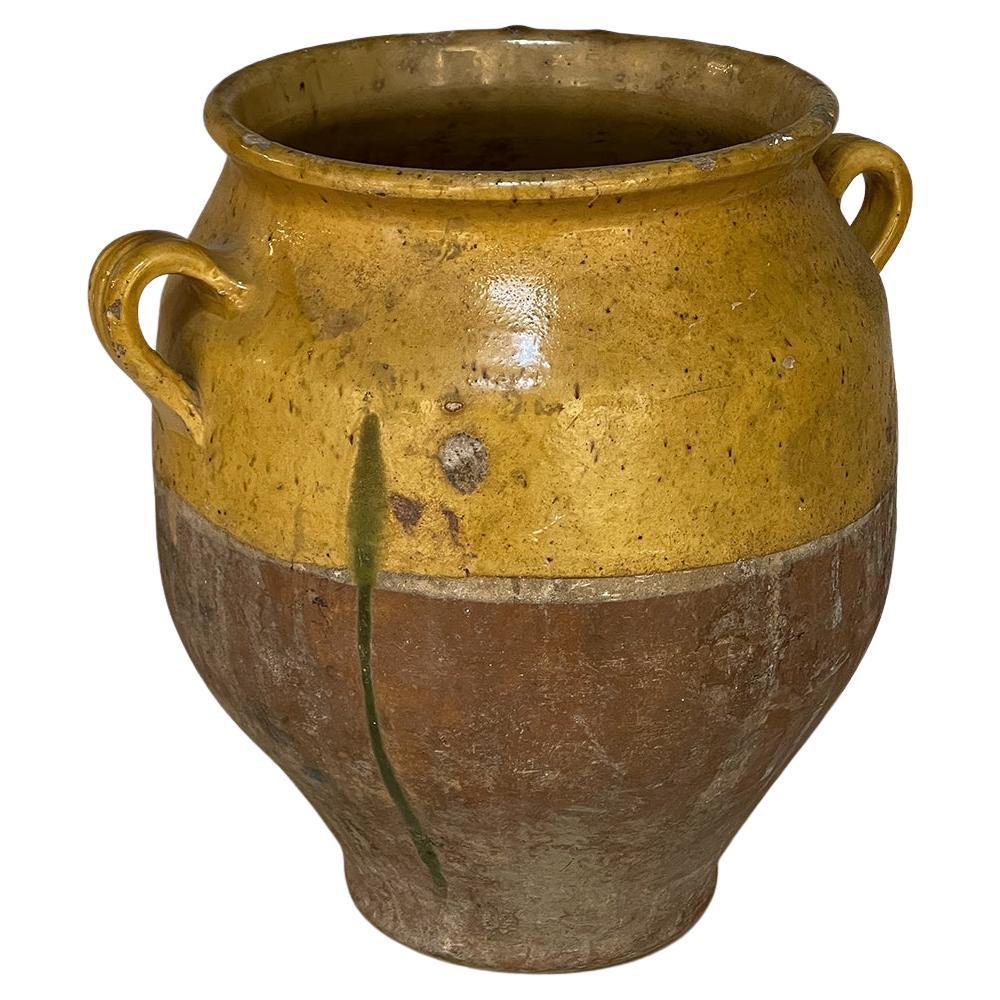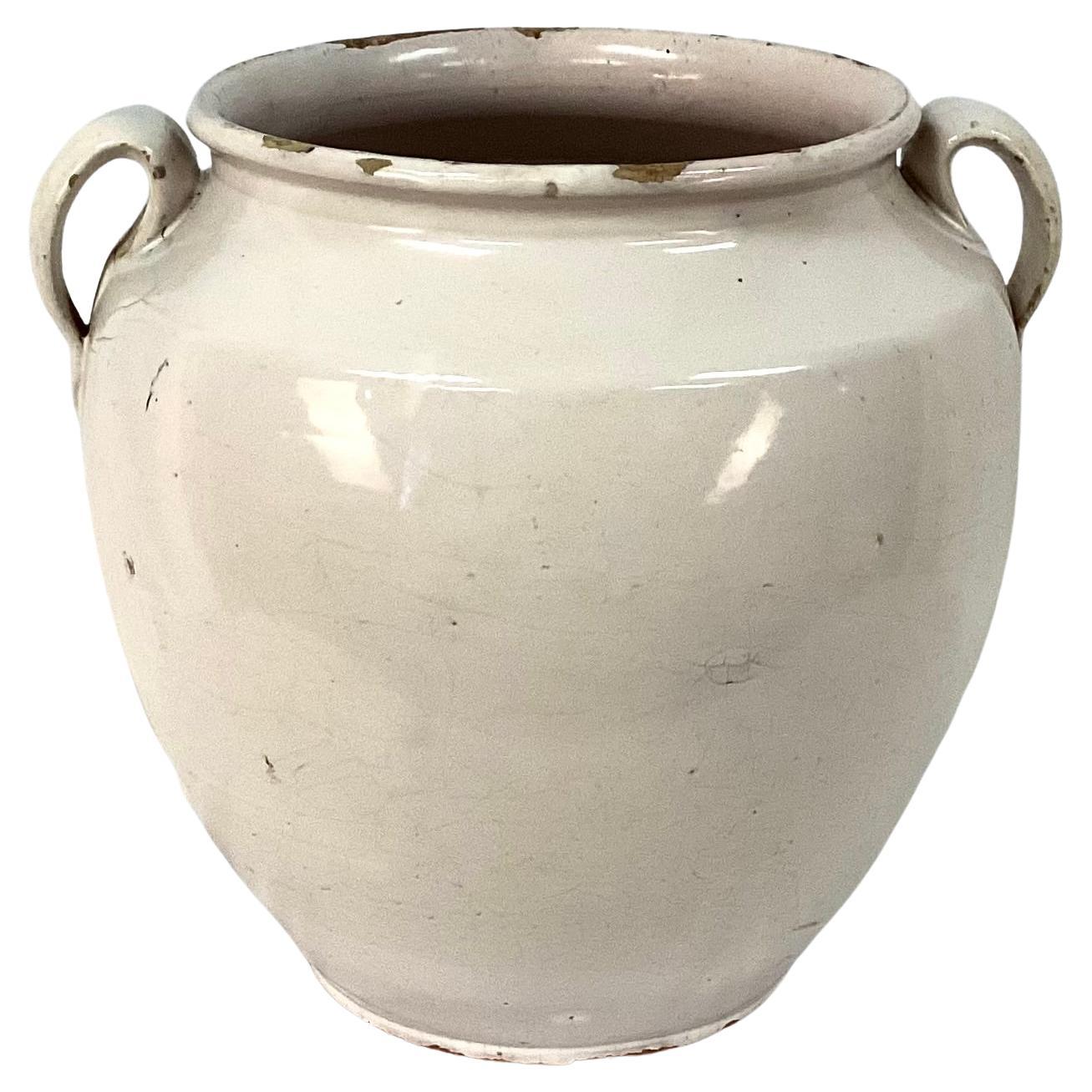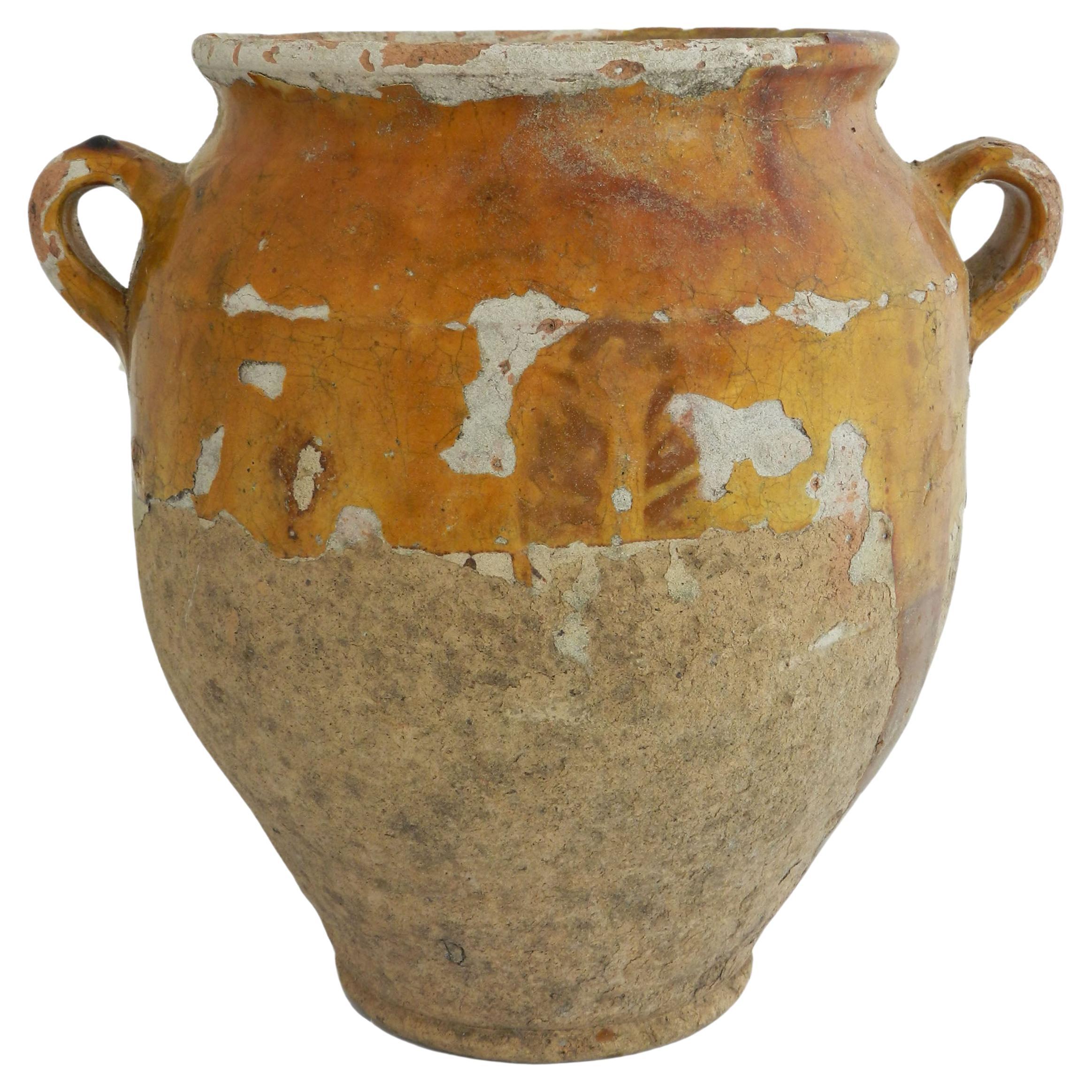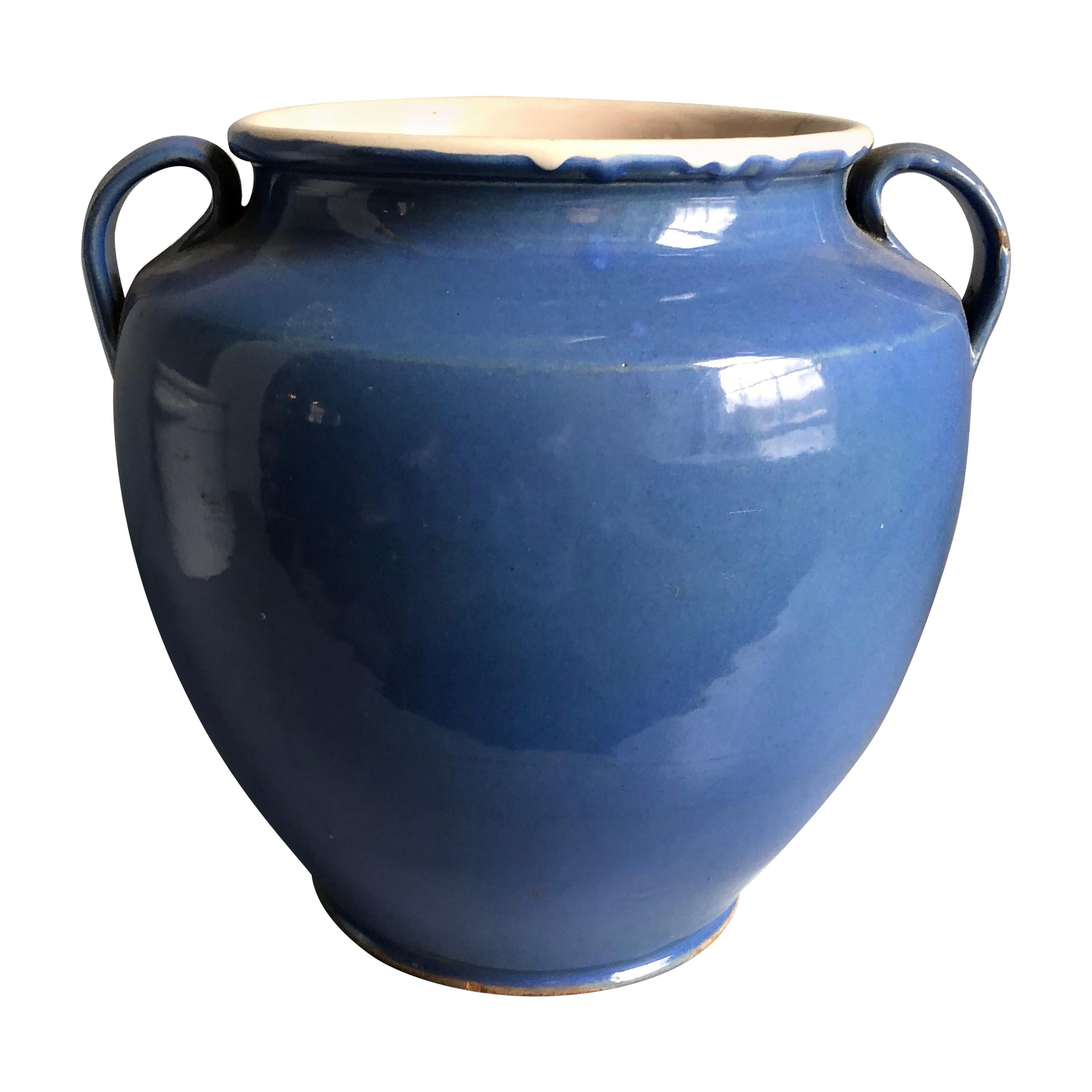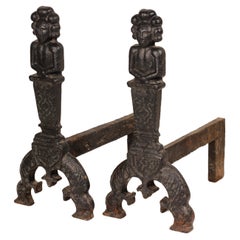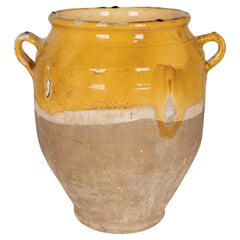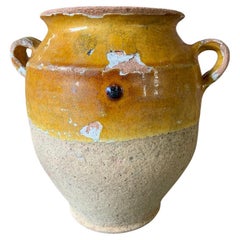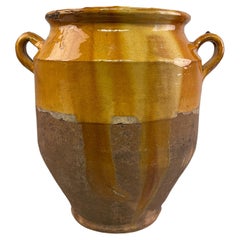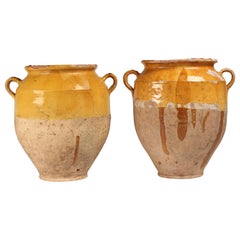
Pair of French 19th Century Confit Pots
View Similar Items
Want more images or videos?
Request additional images or videos from the seller
1 of 17
Pair of French 19th Century Confit Pots
About the Item
- Dimensions:Height: 14.02 in (35.6 cm)Diameter: 8.67 in (22 cm)
- Sold As:Set of 2
- Style:French Provincial (Of the Period)
- Materials and Techniques:
- Place of Origin:
- Period:
- Date of Manufacture:1800s
- Condition:Wear consistent with age and use. Minor losses. Minor structural damages. Minor fading. Pot 1 H 32.7 cm x Dm 26.5 cm Interior Diameter of lip is 18cm approx Pot 2 H 35.6 cm x Dm 22 cm Interior Diameter of lip 18.7cm approx.
- Seller Location:London, GB
- Reference Number:1stDibs: LU2868316369672
About the Seller
5.0
Gold Seller
These expertly vetted sellers are highly rated and consistently exceed customer expectations.
Established in 2015
1stDibs seller since 2017
169 sales on 1stDibs
Typical response time: 1 hour
More From This SellerView All
- Boho Chic 19th Century Decorative Water Spout Handle Jug from Provencal FranceLocated in London, GBA very rare antique French glazed terracotta water spout handle jug in original condition .These jugs were used primarily in the South of France. Chips and imperfections help authent...Category
Antique 19th Century French French Provincial Pottery
MaterialsClay
- 19th Century Dairy Jug in Terracotta twin handles from The Cotswolds EnglandLocated in London, GBThis wonderful over sized twin handled 19th Century Dairy Jug was found in the darkest depths of The historic Cotswolds in England. A Hand made Dairy Jug tha...Category
Antique 1890s English Country Garniture
MaterialsClay, Terracotta
- Pair of 19th Century Victorian Gothic Iron Fire Dogs or AndironsLocated in London, GBA very large and heavy set of Victorian Gothic revival Fire dogs or Andirons made from Iron. Possibly modelled on a much earlier pair. The Victorian Gothic movement or Victorian Revi...Category
Antique 1850s English Gothic Revival Andirons
MaterialsIron
- A pair of 19th Century carved Foo temple dogs or Chinese guardian LionsLocated in London, GBChinese guardian lions, or imperial guardian lions, are a traditional Chinese architectural ornament. Typically made of stone, they are also known as stone lions or shishi (石獅; shíshī). They are known in colloquial English as lion dogs or foo dogs / fu dogs. The concept, which originated and became popular in Chinese Buddhism, features a pair of highly stylized lions—often one male with a ball and one female with a cub—which were thought to protect the building from harmful spiritual influences and harmful people that might be a threat. Used in imperial Chinese palaces and tombs, the lions subsequently spread to other parts of Asia including Japan (see komainu), Korea, Philippines, Tibet, Thailand, Myanmar, Vietnam, Sri Lanka, Nepal, Cambodia, Laos, and Malaysia. There has been extensive interaction between Chinese mythology and Confucianism, Taoism, and Buddhism. Elements of pre-Han dynasty mythology such as those in Classic of Mountains and Seas were adapted into these belief systems as they developed (in the case of Taoism), or were assimilated into Chinese culture (in the case of Buddhism). Elements from the teachings and beliefs of these systems became incorporated into Chinese mythology. For example, the Taoist belief of a spiritual Paradise became incorporated into mythology as the place where immortals and deities used to dwell. Sometimes mythological and religious ideas have become widespread across China's many regions and diverse ethnic societies. In other cases, beliefs are more limited to certain social groups, for example, the veneration of white stones by the Qiang. One mythological theme that has a long history and many variations involves a shamanic world view, for example in the cases of Mongolian shamanism among the Mongols, Hmong shamanism among the Miao people, and the shamanic beliefs of the Qing dynasty from 1643 to 1912, derived from the Manchus. Politically, mythology was often used to legitimize the dynasties of China, with the founding house of a dynasty claiming a divine descent. Mythology and philosophy. Further information: Chinese philosophy True mythology is distinguished from philosophical treatises and theories. Elaborations on the Wu Xing are not really part of mythology, although belief in five elements could appear. The Hundred Schools of Thought is a phrase suggesting the diversity of philosophical thought that developed during the Warring States of China. Then, and subsequently, philosophical movements had a complicated relationship with mythology. However, as far as they influence or are influenced by mythology, divides the philosophical camps into two rough halves, a Liberal group and a Conservative group. The liberal group being associated with the idea of individuality and change, for example as seen in the mythology of divination in China, such as the mythology of the dragon horse that delivered the eight bagua diagrams to Fu Xi, and methods of individual empowerment as seen in the Yi Jing (Book of Changes). The Liberal tendency is towards individual freedom, Daoism, and Nature. The relationship of the Conservative philosophies to mythology is seen in the legendary Nine Tripod Cauldrons, mythology about the emperors and central bureaucratic governance, Confucianism, written histories, ceremonial observances, subordination of the individual to the social groups of family and state, and a fixation on stability and enduring institutions. The distinction between the Liberal and Conservative is very general, but important in Chinese thought. Contradictions can be found in the details, however these are often traditional, such as the embrace by Confucius of the philosophical aspects of the Yi Jing, and the back-and-forth about the Mandate of Heaven wherein one dynasty ends and another begins based according to accounts (some of heavily mythological) where the Way of Heaven results in change, but then a new ethical stable dynasty becomes established. Examples of this include the stories of Yi Yin, Tang of Shang and Jie of Xia or the similar fantastic stories around Duke of Zhou and King Zhou of Shang. Mythology exists in relationship with other aspects of society and culture, such as ritual. Various rituals are explained by mythology. For example, the ritual burning of mortuary banknotes (Hell Money), lighting fireworks, and so on. A good example of the relationship of Chinese mythology and ritual is the Yubu, also known as the Steps or Paces of Yu. During the course of his activities in controlling the Great Flood, Yu was supposed to have so fatigued himself that he lost all the hair from his legs and developed a serious limp. Daoist practitioners sometimes incorporate a curiously choreographed pedal locomotion into various rituals. Mythology and practice, one explains the other: in these rituals, the sacred time of Yu merges with the sacral practice of the present. Various ideas about the nature of the earth, the universe, and their relationship to each other have historically existed as either a background or a focus of mythologies. One typical view is of a square earth separated from a round sky by sky pillars (mountains, trees, or undefined). Above the sky is the realm of Heaven, often viewed of as a vast area, with many inhabitants. Often the heavenly inhabitants are thought to be of an "as above so below" nature, their lives and social arrangements being parallel to those on earth, with a hierarchical government run by a supreme emperor, many palaces and lesser dwellings, a vast bureaucracy of many functions, clerks, guards, and servants. Below was a vast under ground land, also known as Diyu, Yellow Springs, Hell, and other terms. As time progressed, the idea of an underground land in which the souls of the departed were punished for their misdeeds during life became explicit, related to developments in Daoism and Buddhism. The underground world also came to be conceived of as inhabited by a vast bureaucracy, with kings, judges, torturers, conductors of souls, minor bureaucrats, recording secretaries, similar to the structure of society in the Middle Kingdom (earthly China). Chinese temple Dogs...Category
Antique 1860s Chinese Chinese Export Sculptures and Carvings
MaterialsHardwood
- 19th Century Sarreguemines Majolica Seaweed and Shell Barbotine Oyster PlateBy SarregueminesLocated in London, GBCreating a wonderful display for Oysters or sea food this French Majolica oyster plate in lustrous deep colouring, but the well thought of maker Sarreguemines, circa 1890. Six scallo...Category
Antique 1890s French French Provincial Platters and Serveware
MaterialsCeramic, Earthenware
- 19th Century Sarreguemines Majolica Seaweed and Shell Barbotine Oyster PlateBy SarregueminesLocated in London, GBCreating a wonderful display for Oysters or sea food this French Majolica oyster plate in lustrous deep colouring, but the well thought of maker Sarreguemines, circa 1890. Six scallo...Category
Antique 1890s French French Provincial Platters and Serveware
MaterialsCeramic, Earthenware
You May Also Like
- 19th Century French Terracotta Confit PotLocated in Winter Park, FLA 19th century French earthenware confit pot with traditional yellow glaze. Some chips and losses to glaze. These ordinary earthenware vessels were once used daily in the French cou...Category
Antique 19th Century European French Provincial Vases
MaterialsTerracotta
- 19th Century French Confit PotLocated in Ongar, GBA nice 19th century French Confit pot of medium size. These were buried in the ground to keep food produce cool. The unglazed bottom was the part that was buried.Category
Antique 19th Century French Jars
MaterialsEarthenware
- Late 19th Century French Terracotta Confit PotLocated in Winter Park, FLA large earthenware confit pot from the Southwest of France with traditional yellow, ochre glaze. One of the tallest I have ever seen at 14" high. Some chips and hairline and losses ...Category
Antique Late 19th Century European French Provincial Pottery
MaterialsTerracotta
- 19th Century French Glazed Confit Pot Glazed Earthenware PotLocated in Auribeau sur Siagne, FRA large authentic 19th century French confit pot or jar. This pot is full of character, handcrafted and glazed with two charming handles, known as 'ears'. These jars were used for st...Category
Antique 19th Century French French Provincial Garniture
MaterialsEarthenware, Pottery
- 19th Century Country French Confit PotLocated in Dallas, TX19th Century country French confit pot is a fine example of the pinnacle of evolution of the clay pot as used for foodstuff storage. The concept dates back thousands of years, and no...Category
Antique 1870s French Country Planters and Jardinieres
MaterialsCeramic
$398 Sale Price20% Off - 19th Century Country French Confit PotLocated in Dallas, TX19th Century Country French Confit Pot is a fine example of the pinnacle of evolution of the clay pot as used for foodstuff storage. The concept dates back thousands of years, and no...Category
Antique 1870s French Country Planters and Jardinieres
MaterialsCeramic
$398 Sale Price20% Off

